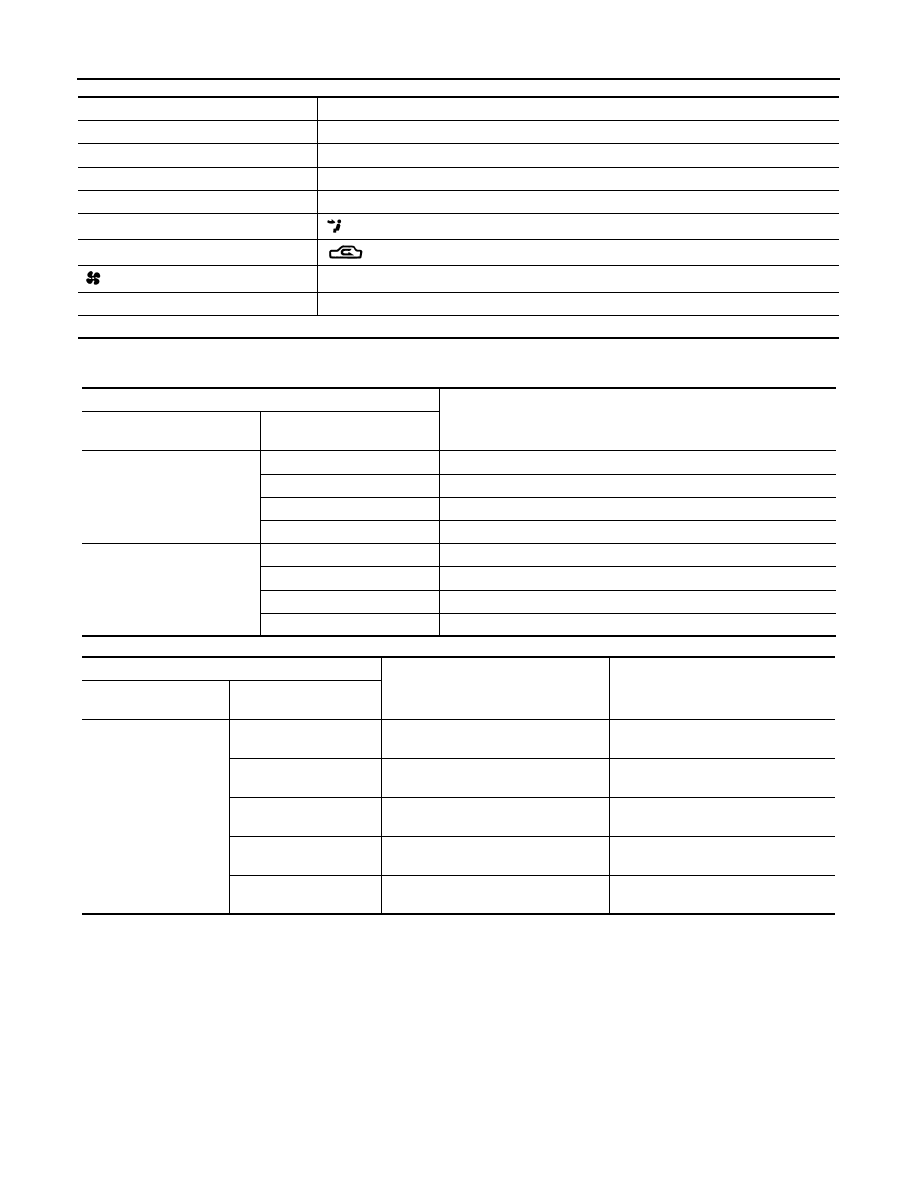Infiniti G35 (V35) Sedan. Manual - part 750

HA-34
< ON-VEHICLE MAINTENANCE >
REFRIGERATION SYSTEM
Testing must be performed as follows:
TEST READING
Recirculating-to-discharge Air Temperature Table
Ambient Air Temperature-to-operating Pressure Table
Refrigerant Leaks
INFOID:0000000000959864
Perform a visual inspection of all refrigeration parts, fittings, hoses and components for signs of A/C lubricant
leakage, damage and corrosion. A/C lubricant leakage may indicate an area of refrigerant leakage. Allow
extra inspection time in these areas when using either an electrical leak detector or fluorescent dye leak
detector (SST: J-42220).
If dye is observed, confirm the leak with an electrical leak detector. It is possible a prior leak was repaired and
not properly cleaned.
When searching for leaks, do not stop when one leak is found but continue to check for additional leaks at all
system components and connections.
When searching for refrigerant leaks using an electrical leak detector, move the probe along the suspected
leak area at 1 to 2 inches per second and no further than 1/4 inch from the component.
Vehicle condition
Indoors or in the shade (in a well-ventilated place)
Doors
Closed
Door windows
Open
Hood
Open
TEMP.
Max. COLD
Mode switch
(Ventilation) set
Intake switch
(Recirculation) set
Fan (blower) speed
Max. speed set
Engine speed
Idle speed
Operate the air conditioning system for 10 minutes before taking measurements.
Inside air (Recirculating air) at blower assembly inlet
Discharge air temperature at center ventilator
°
C (
°
F)
Relative humidity
%
Air temperature
°
C (
°
F)
50 - 60
20 (68)
6.3 - 7.9 (43 - 46)
25 (77)
10.6 - 12.8 (51 - 55)
30 (86)
14.8 - 17.6 (59 - 64)
35 (95)
19.0 - 22.3 (66 - 72)
60 - 70
20 (68)
7.9 - 9.4 (46 - 49)
25 (77)
12.8 - 14.9 (55 - 59)
30 (86)
17.6 - 20.3 (64 - 69)
35 (95)
22.3 - 25.7 (72 - 78)
Ambient air
High-pressure (Discharge side)
kPa (kg/cm
2
, psi)
Low-pressure (Suction side)
kPa (kg/cm
2
, psi)
Relative humidity
%
Air temperature
°
C (
°
F)
50 - 70
20 (68)
768 - 940
(7.8 - 9.6, 111.4 - 136.3)
180 - 220
(1.8 - 2.2, 26.1 - 31.9)
25 (77)
925 - 1,131
(9.4 - 11.5, 134.1 - 164.0)
218 - 267
(2.2 - 2.7, 31.6 - 38.7)
30 (86)
1,082 - 1,322
(11.0 - 13.5, 156.9 - 191.7)
258 - 314
(2.6 - 3.2, 37.4 - 45.5)
35 (95)
1,238 - 1,513
(12.6 - 15.4, 179.5 - 219.4)
296 - 362
(3.0 - 3.7, 42.9 - 52.5)
40 (104)
1,395 - 1,704
(14.2 - 17.4, 202.3 - 247.1)
335 - 408
(3.4 - 4.2, 48.6 - 59.2)